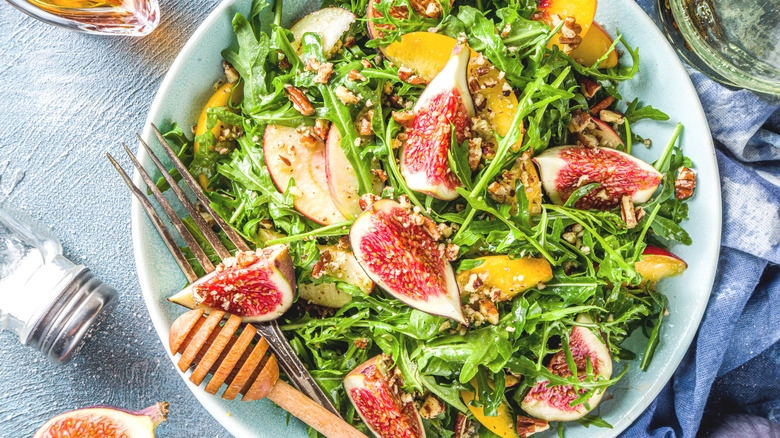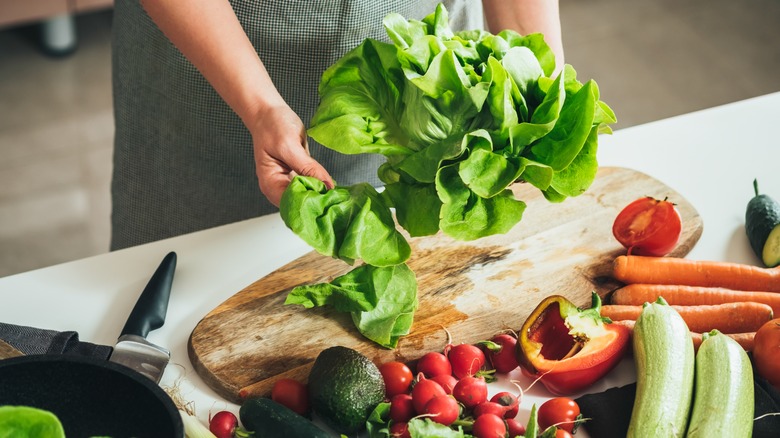Why It's Best To Pick A 'Theme' For Your Salads
Once relegated to a side dish, salads are now a staple of American cuisine. According to Study Finds, Americans typically eat around four salads per week. 62% of respondents stated that they considered salad a staple in their diets. In contrast to older generations, a majority of Gen Z respondents said that they considered salad a main dish–evidence that salad is taking on an increasingly important role in our culinary consciousness.
However, not all salads are created equal. If you're eating salad on a regular basis or serving it as a main dish, wilting iceberg doused with ranch isn't going to cut it. Bon Appétit warns against common mistakes like not properly drying your greens after washing them, picking the wrong dressing for the ingredients, and tossing your salad too soon so chunky items sink to the bottom.
While Study Finds notes that 48% of Americans believe in the "ultimate salad," they disagree on what exactly goes into it. Fortunately, no matter your preferences, professionals have a few foolproof formulas to help up your salad game.
Pick a theme
Chef Yehuda Sichel, whose restaurant, Huda, is gaining popularity throughout Philidelphia for its salads, dished his secrets to Food and Wine. "It has to be cohesive," Sichel explained. He recommends sticking to a theme–for a summery salad, Sichel pairs ingredients like corn, peaches, and barbecue-brushed chicken; in the fall, he combines cashews and pumpkins.
Your salad doesn't necessarily have to be inspired by the season, though. Focusing on a specific cuisine, like Moroccan chickpea salad or Mexican kale salad, can produce great results, too. However, Sichel warns against adding too many ingredients. As The New York Times notes, you can achieve a brilliant salad by focusing on just one ingredient. Tomatoes are at the heart of a Caprese salad, while Japanese sunomono salad highlights the humble cucumber. If your ingredients are carefully selected to work in harmony, you won't need to embellish.
Bon Appétit also has a simple formula for salads: a base vegetable, a dressing, an ingredient to give texture and crunch (think nuts or croutons), and optional extras like fruits, herbs, or cheese. Pair these simple rules with your chosen theme, and you're sure to have a hit salad.

